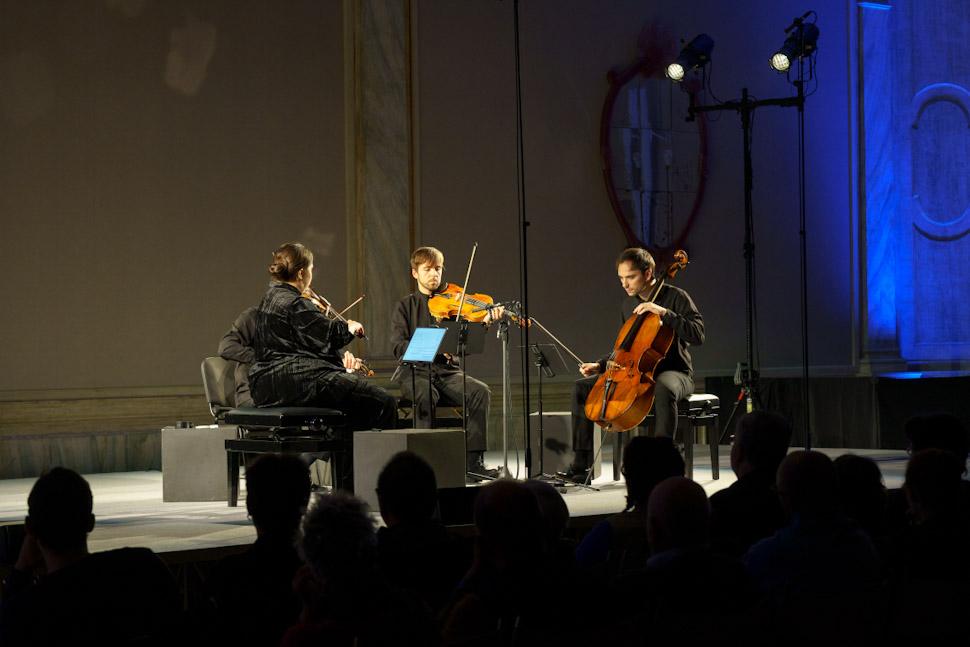| Vito Žuraj: | Scratch (2012, 6’) for string quartet |
|---|---|
| Clara Iannotta: | A Failed Entertainment (2013, 17’) for string quartet - Italian premiere |
| Georg Friedrich Haas: | String Quartet no. 10 (2016, 40’) |
| Instrumentalists: | Kandinsky Quartet |
| Production: | La Biennale di Venezia – CIMM, Centro di Informatica Musicale Multimediale |
Vito Žuraj / Clara Iannotta / Georg Friedrich Haas

CLARA IANNOTTA - A FAILED ENTERTAINMENT
I was on a four-day train trip from San Francisco to New York when I started reading Infinite Jest by David Foster Wallace. I have been looking for a way – my personal way – to deal with form and time, and this book helped me, giving me a new, different perspective on them. I am not saying that my piece is related to Infinite Jest – although A Failed Entertainment was Wallace’s working title for his novel – but that this was the impulse which led me here, a starting point for a search that will probably take me several years.
Clara Iannotta
VITO ŽURAJ - SCRATCH
Scratch-tones are the timbres string players produce by drawing the bow across the strings with excessive pressure. The result typically has no defined pitch, and can range from a tender, abstract scratching to an aggressive crunch. Scratch opens with a plethora of such tones in varying dynamics, followed by an interplay of glissando contours, each featuring one of the numerous timbral variations. The prevailing glissando gestures give way shortly before the work’s close to a sudden and surprising moment of clarity, in which all four instruments join forces in a single, melodic line of legato chords in rhythmic unison. The four instruments quickly disperse again, however, and the work finishes on a splintering of col legno and, finally, a return to the opening scratch-tones.
Vito Žuraj
GEORG FRIEDRICH HAAS - QUARTETTO D'ARCHI N.10
In 2001 I composed my String Quartet no. 3, “In iij. Noct.” which requires performance in complete darkness. I decided to write another quartet for darkness: my String Quartet no. 9. This string quartet was slated to be performed within one week by two great quartets, JACK Quartet and Arditti Quartet. I was excited by this wonderful proposition – until I started to write the piece. To work on the details. Composing for darkness is fundamentally different from traditional composing: you do not directly score the piece – you compose a process for individuals, forced to perform in isolation, having only aural contact with their partners. I knew I had to write two different string quartets: the Ninth String Quartet is written for JACK Quartet; my String Quartet no. 10 is an homage to the Arditti Quartet.
Georg Friedrich Haas